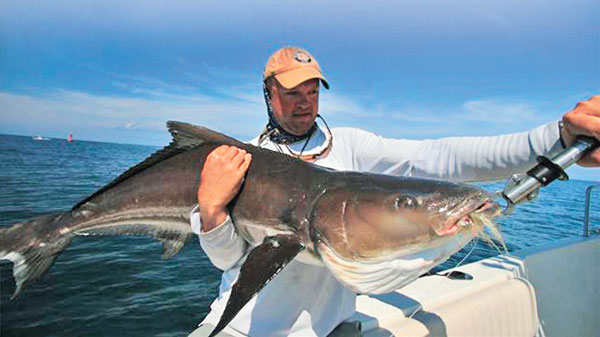
May is great time to sight-fish for cobia in South Carolina’s Port Royal Sound and Broad River.
John Irwin is no Cub Scout when it comes to cobia fishing. A 37-old-guide, he is more like a Four-Star General. His battlefield is South Carolina’s Broad River, and the troops are the fishermen in his boat. On the average, he lands more than 100 cobia during May, the peak of the annual migration.
Heading out from the landing, he’s relaxed, cracking jokes and talking about how productive the first two weeks of the season has been; 16 cobia for his clients.
But when a brown spot appears on the slick blue surface, play time is over.
It’s go time.
“There!” Irwin hollers. “Cobia straight ahead!”
He lays down the throttle, popping his flats boat up on plane, then immediately gearing the motor back down. At a glide across the glassy surface, Irwin directs Joe Benson, his friend and a fly-fishing guide from Tennessee, to the bow,
“There Joe, at 2 o’clock; he’s moving away from us,” Irwin said, getting ready for the second attempt of the morning.
“He sees it, now keep coming back with it…. Keep coming,” says Irwin, who has operated Fly Right Charters for the past dozen years. “He has it…. Nice, Joe!”
A 20-pounder, Irwin estimates, the fish puts a big arch in Benson’s fly rod as it makes several wild, thrashing runs away from the boat. Then, swimming toward the boat, the line flings loose and the rod’s bow straightens. Everyone sighs, but heads remain up after a hot start.
About 10 minutes later, Guitou Feuillebois, another friend and freshwater guide from Tennessee, hooks up with a another cobia, about the same size as the last one. But this cobia pops up right next to the boat, and even after a phenomenal cast, the hook never set in its rubbery lip, and it gets away.
“Some days, we won’t get shots at any, but other days, we may see 10 or more,” Irwin explains to his friends, who have never landed a cobia.
The next day, Irwin puts Benson on his first, a 50-pounder.
Cobia are not renowned for their intellect; they are not easily spooked, either. Often, while cruising or gearing the motor down, they will suddenly appear boatside. Their broad, brown backs and dorsal fins drift under the surface like a floating log. They want to investigate the commotion.
Cobia are curious sight feeders constantly looking for their next meal. Like a nursing calf, they will even suck on a chum bag, drifting in the current off the transom. But it’s not always that easy to entice them to the boat within an arm’s length. And their docile behavior, initially, is the Dr. Jekyll to their Mr. Hyde when a hook punches through their jaws.
Once hooked, they will peel off line and take an angler for a wild and often long, exhausting fight. Their fiery demeanor is even more evident when they are landed, thrashing around furiously in the boat.
Although some anglers prefer to anchor up and nab a passing, inquisitive cobia, Irwin is religious about going to find them first.
Why work harder?
“You get to cast right to the fish, see the fish take the bait, and see it all happen,” Irwin said. “It’s a lot more challenging.”
Irwin, who runs Fly Right Charters out of Charleston, rents an apartment in Beaufort in April through May. The bite in the Broad River, adjacent to Port Royal Sound, is among the hottest on the east coast.
It’s no coincidence, according to Dr. Michael Denison, assistant director of the S.C. Dept. of Natural Resources’ marine division, who said they move into the Broad River when water temperatures reach about 69 degrees.
“Most females are preparing to spawn in the estuary,” he said. “They do indeed spawn in and around the Broad River as well as a number of other estuaries up and down the East Coast.
“They also apparently spawn offshore, as there appears to be genetic structure to the population, which means that different, distinct population segments spawn in different locations, and there isn’t a lot of overlap.”
In an average season, Irwin says he lands over 100 cobia with clients over a month-long span while their numbers peak during their migration from South Florida up to Chesapeake Bay. Irwin said he has caught them in late July.
The geography of the area makes it a consistently popular spot for the cobia and anglers. The fish pour into the bait-rich sound and often take their first, immediate left up the Broad River, which produced an 87-pound, 12-ounce brute that was formerly the state record.
“Having the area they frequent narrows down the playing field,” Irwin said. “You’re upping your chances, and the Broad allows you to fish all day.”
The moon phase is the best indicator as to when the cobia make their first inshore wave, following menhaden and green herring, aka greenies.
“I think last year, fish got caught the second week of April,” Irwin said. “The biggest way to time it is with the big or full moon on a big tide.”
Irwin suggests going on the prowl when the water surface is calm.
“Slack tide is your best tide (to) find the fish on the surface,” he said “The way the Broad faces, the incoming tides will give you super glassy water … sexy looking stuff, and a southwest wind on incoming tide makes it real slick.”
It’s these conditions, along with the northeast-facing Broad River, that makes it the easiest time to sight-cast for cobia.
“I’m generally searching through the middle of the river for the humps, or I’ll look around the (SC 170) bridge,” Irwin said.
While in Port Royal Sound or Charleston Harbor, Irwin will also look around buoys where baitfish often congregate.
Unlike most other large gamefish, schools of bait on the surface and diving birds are not indicative that cobia are feeding from below.
“I have seen them smacking bait, but it’s pretty rare,” Irwin said. “That river is so full of bait, and I’ve been looking for rips, and there are places I see more fish in one area over the other … you may see a crease.”
When you sneak up on an unexpecting cobia, Irwin said positioning is crucial.
“I usually try to come up behind them,” he says. “If the guy is a right-hander, I try to get him to 10 or 11 o’clock.”
Keep the target within longest-cast range.
“Once you get the fish turned, you need to give it enough space to work the bucktail or plug,” Irwin said.
Cobia are not picky eaters and will hit a wide variety of live and artificial baits, but Irwin prefers one artificial when he’s got a spinning rod in hand.
“I like the bucktails the best, and they’re the most productive,” he said. “There’s nothing like throwing a live bait in front of them, but I like plastics.”
No matter what bait or lure you use, do not let a cobia swim with it.
“You want to go ahead and get the hook into him quick,” Irwin said. “He’ll spit it.”
Casting a fly to a cobia is not a leisurely task, either. Irwin said to make the retrieve quick and deliberate to get the fly moving.
“If they start following it and nose it, they will literally push it with their nose,” Irwin says. “You need to make the fish feel like he’s really pursuing it.”
Even within casting range, and unspooked, cobia are not always interested. The full and new moon don’t help.
“The fish that are cruising when they come off the side, it’s hard to get lined up on them,” Irwin said. “On big-tide days when I’m sight-casting, they’re moving and almost not catchable fish.”

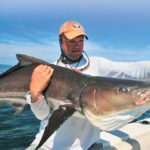
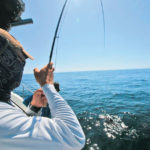
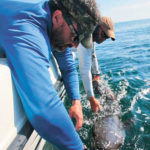
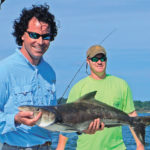
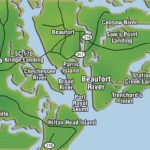
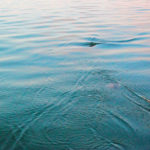



Be the first to comment